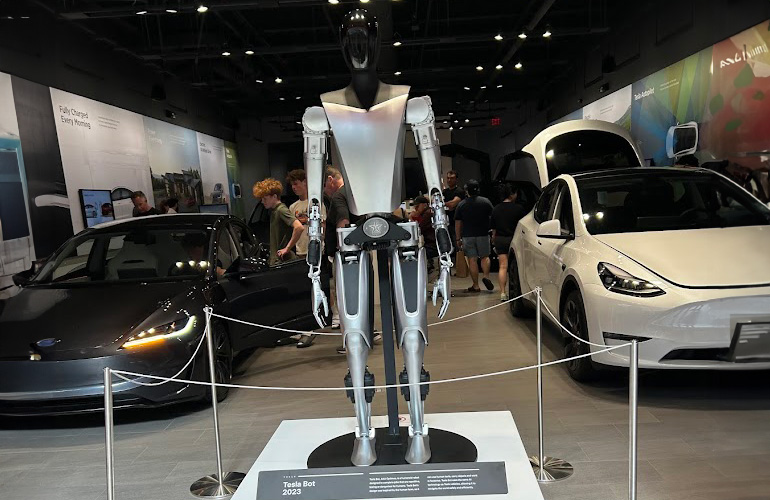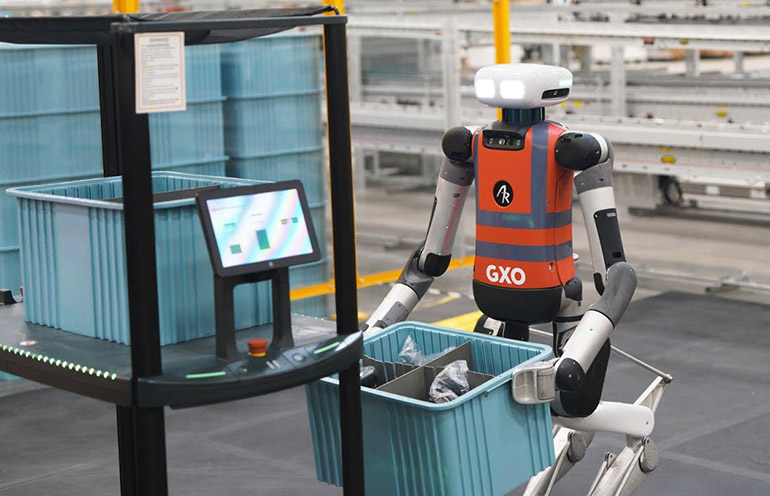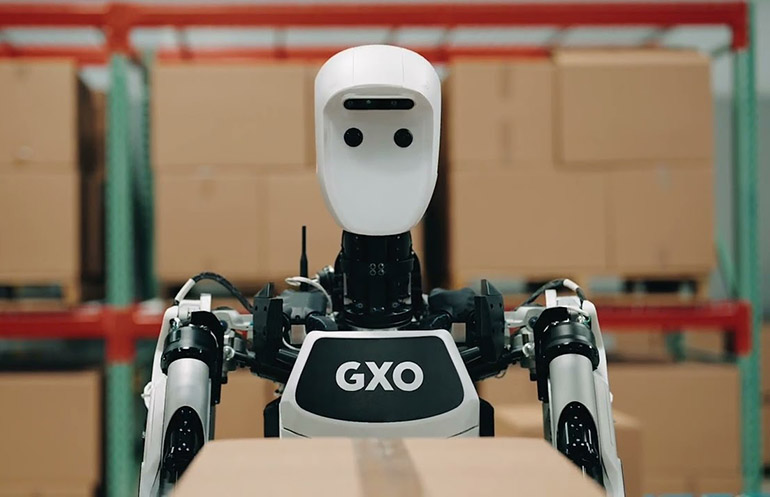Humanoid robots need pilot studies to demonstrate utility, says Silicon Foundry
Silicon Foundry associate Lucas Tesler explains why humanoid robotics developers should conduct pilot testing well before commercial rollouts.
The post Humanoid robots need pilot studies to demonstrate utility, says Silicon Foundry appeared first on The Robot Report.

Humanoids such as Tesla’s Optimus need commercial pilot studies, says Silicon Foundry. Credit: Eugene Demaitre
Lately, not a week goes by without some announcement around humanoid robotics. However, developers should invest time and money into pilot studies now to identify the best tasks and commercial applications for their systems, according to Silicon Foundry.
“We’ve been tracking the technology for a while to see the predicted timeline of what’s useful and viable,” said Lucas Tesler, an associate at Silicon Foundry. “The current figure is three to five years out.”
San Francisco-based Silicon Foundry is a Kearney company that provides clients and members with expert advice on innovation and investment. It helps identify technologies to integrate and best-in-class solutions, and its Fortune 500 customers include BP, United Parcel Service, Southwest Airlines.
Why are humanoid trials necessary?
The global market for humanoid robots could reach $7.9 billion by 2025, predicted BBC Research LLC. While numerous systems are in development, the few that are actually involved in trials include Agility Robotics‘ Digit and Apptronik‘s Apollo.
Despite the dream of general-purpose robots, humanoid developers should start with a tighter and more achievable scope of work, said Silicon Foundry. As with all automation, these robots can first address dull, dirty, or dangerous tasks in manufacturing and the supply chain.
“Humanoids fall into a greater trend toward industrial automation,” Tesler told The Robot Report. “We have a huge labor shortage, and all kinds of robots are being integrated into factories and warehouses around the world.”
Thus, both Digit and Apollo have started with relatively simple tasks at GXO Logistics. Digit was at Amazon, and Apollo is also at Mercedes-Benz, while BMW is testing the Figure 01 humanoid. Similarly, Tesla envisions using Optimus in its factories, and Boston Dynamics plans to test its latest version of Atlas in Hyundai’s facilities.
“Automation of palletizing and depalletizing is further along than humanoids, but we’re seeing increasing processor speeds, incremental advances in hardware design, and leapfrog improvements in artificial intelligence,” Tesler said. “AI is being integrated for computer vision, object detection, and more robust robot control systems.”

The Digit humanoid is in trials with GXO and Spanx. Source: Agility Robotics
Pilots can help develop metrics, says Silicon Foundry
While robotics developers want to avoid “pilot purgatory,” they need to establish clear performance benchmarks and measure potential efficiency and safety benefits in comparison with manual labor, Silicon Foundry noted.
“Most of our corporate members are interested in warehouse automation,” said Tesler. “They have labor-intensive roles with high rates of turnover and injury that are attractive to automate.”
“Pilot studies provide quantifiable results in terms of parcels per hour, error rates, time for onboarding, maintenance, energy use, and utilization versus standby/charge times,” he explained. “Organizations can work through hiccups before committing resources to deploying humanoids at scale.”
It’s still early days for standards around humanoid robots, but ASTM International has launched a subcommittee for legged robots, and IEEE’s Robotics & Automation Society has formed a study group around humanoids. In addition, industry associations in China have drafted guidelines for humanoid development.

Apollo is being tested with GXO Logistics. Source: Apptronik
Levels of autonomy to vary, increase over time
Pilot projects can help developers refine the fundamentals — locomotion, perception, navigation, and manipulation — before they attempt to roll out fleets or have their humanoids operate alongside people, said Silicon Foundry.
“Many of these tasks don’t require fully articulated hands or higher-order decision making,” Tesler asserted. “If we’re looking at specific applications at high volume, it makes sense to invest in a more specialized robot than a humanoid. As embedded AI, humanoids offer the ability to switch tasks and be repurposed, unlike a specialized robot for, say, truck unloading that has downtime between jobs.”
Since warehouse management systems (WMS) are already centrally coordinating robots in repetitive tasks, there’s less urgency in developing full autonomy at the edge, he said.
“There is some interest in integrating humanoids with WMS and reducing friction points,” said Tesler. “But this is only useful if the pilot facility is as close to the real world as possible. Synthetic training data could also be very effective, with thousands or millions of iterations of scenarios to train the cognitive element, but simulations must be augmented by real-world data.”
What about the latest advances in AI?
“There isn’t necessarily a need for human involvement, but the implementation of generative AI will make human-machine interaction [HMI] more interesting,” observed Tesler. “We’ve seen videos of Boston Dynamics’ Spot receiving instructions thanks to large language models [LLMs], so we can imagine giving and getting feedback from fleets of humanoids.”
Scaling humanoid deployments to come, says Silicon Foundry
“People don’t appreciate the scaling of manufacturing for humanoids, which are incredibly complex,” Tesler said. “Some of these robots hve a similar part count to electric vehicles but a much smaller frame. Getting to that sophisticated production capability at scale will take years.”
Agility Robotics is looking ahead with its RoboFab, which is intended to make more than 10,000 robots a year, he added. The ultimate market size could be in the millions of units.
“Like Amazon, any company that has labor-intensive tasks like picking totes and moving them to conveyors, loading trucks, or packing will want humanoids to augment their workforces sooner rather than later,” said Tesler.
One justification for the humanoid form factor is that it can work in brownfield environments designed around humans, he said. However, certain non-humanoid features such as wheels could be more energy-efficient and lead to a range of designs with only some human-like features in factories of the future.
“We as humans tend to ascribe intelligence to anything that looks like us, but that’s not necessarily the most efficient design,” Tesler said. “This brings us full circle to the debate between general-purpose robots versus more specialized systems.”
The post Humanoid robots need pilot studies to demonstrate utility, says Silicon Foundry appeared first on The Robot Report.

